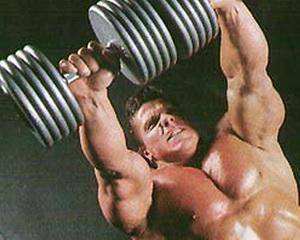TOP BLOCK UNDER WIDE ENOUGH
 The upper block (or vertical thrust) loads the same array of muscles as pull-ups, which means that in many cases it can serve as an excellent alternative.
The upper block (or vertical thrust) loads the same array of muscles as pull-ups, which means that in many cases it can serve as an excellent alternative.
For example, for beginners who find it difficult to perform pull-ups, working with the weight of their body, or as an element of diversity in the training of more experienced athletes.
Benefits of exercise
Traction on the upper block is one of the main exercises in bodybuilding and fitness. At its core, the exercise is basic and involves a huge array of muscles, in particular, it affects the outer edges of the latissimus muscles, the upper back, the pectoral muscles, and the back bundle of the deltoid muscles, biceps and forearm.
This exercise will be especially useful for beginners and those who, for various reasons, are ill-equipped with pull-ups. In the case of the upper block, you can easily vary the load, while in the pull-ups you work with your own weight, which for many is a very heavy weight. Also to the advantages of this exercise is to include its minimum injury risk.
Technique perform the upper block wide grip
1. Sit in the simulator and secure the legs so that they do not come off the bench during the exercise, with the help of a special T-roller. After a little lift and grab a wide grip on the crossbar. Sometimes, due to the design of the simulator or your height, you will not be able to reach the crossbar by yourself; in this case, let your partner help you to lower it. Now straighten your back, strain your lower back and straighten your arms completely, without releasing the crossbar, and press your feet against the floor. This is the starting position.
2. Take a deep breath and, holding your breath, straining your back muscles and reducing the shoulder blades, gently pull the neck down to your chest. When the neck reaches the level of the shoulders, pause and strain the broadest as much as possible.
3. Gently return the bar to its original position, exhale. After a pause, do the next repetition.
It is important:
In order to maximally load the back muscles (first of all, the broadest), pull the neck straight down; to do this, sit on the bench right below the fingerboard. When the neck moves diagonally in your direction, the rear deltas take over part of the load.
In doing the exercise, do not round the back and shoulders, and do not strain the press, if it does not work out otherwise, it means that the weight is great for you and must be reduced.
Begin to perform the exercise with the attention of the shoulder blades and only then help pull the neck with your hands so that the elbows fall parallel to each other and strictly down.
By holding your breath during traction, you help keep the body straightened, which makes the exercise safer.
Options
Depending on the grip and its width, the thrust of the vertical (upper) block will allow you to work out the muscles of the upper and middle backs. The basic rule is: the wider the grip, the stronger the top of the widest ones, which actually determines the width of the back. Accordingly, the narrower the grip, the stronger the load is shifted down the broadest muscles. And if your main goal is biceps, then just change the grip on the back (palms look at the torso) and grab the fingerboard by the grip of the shoulder width.
Working muscles when the upper unit
the broadest muscles
upper back
chest muscles
deltoid muscles (posterior head)
biceps
forearm




